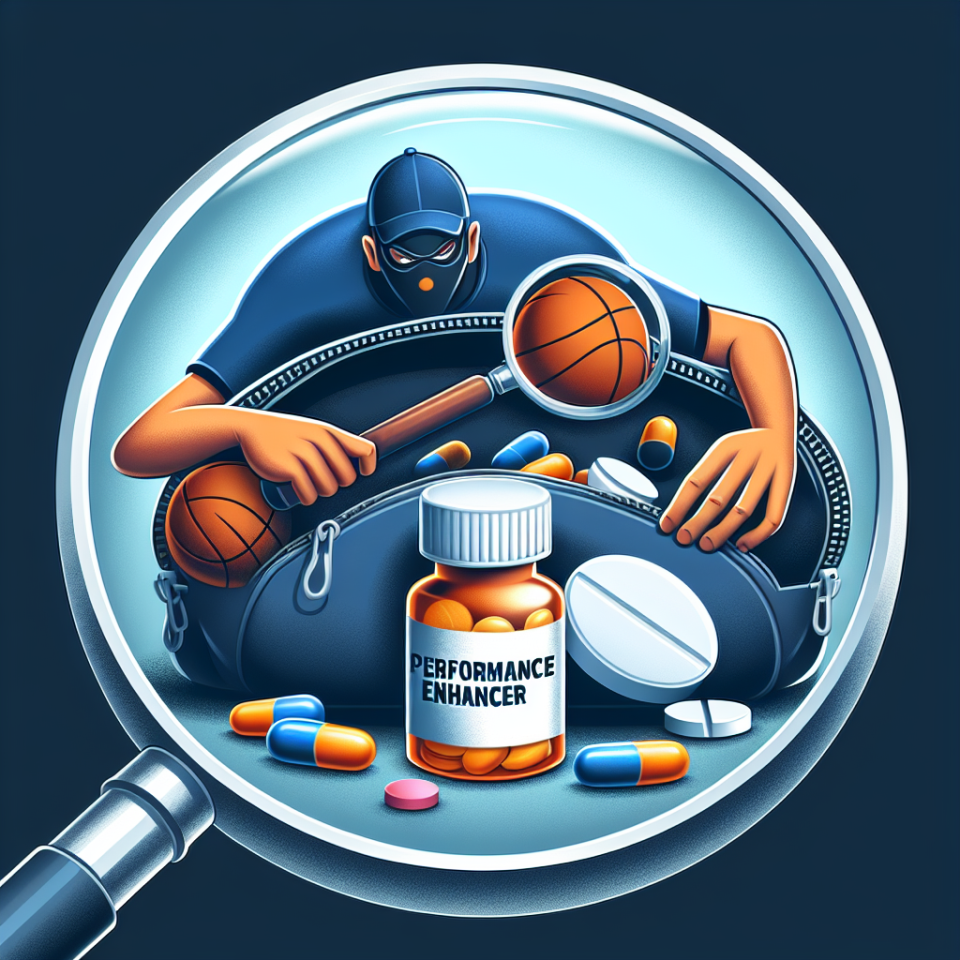-
Table of Contents
Drostanolone Propionate: Hidden Doping in Sports
Drostanolone propionate, also known as Masteron, is a synthetic anabolic-androgenic steroid (AAS) that has gained popularity among athletes and bodybuilders for its ability to enhance physical performance and muscle mass. However, its use in sports is not only controversial but also illegal, as it is classified as a prohibited substance by the World Anti-Doping Agency (WADA). Despite this, drostanolone propionate continues to be used by athletes, often in a covert manner, to gain an unfair advantage over their competitors. In this article, we will explore the pharmacology of drostanolone propionate, its effects on athletic performance, and the prevalence of its use in sports.
The Pharmacology of Drostanolone Propionate
Drostanolone propionate belongs to the class of AAS, which are synthetic derivatives of the male sex hormone testosterone. It was first developed in the 1950s and has been used medically to treat conditions such as breast cancer and muscle wasting diseases. However, its use in sports is primarily for its anabolic effects, which include increased muscle mass, strength, and endurance.
Like other AAS, drostanolone propionate works by binding to androgen receptors in the body, which then activate certain genes responsible for muscle growth and development. It also has anti-catabolic properties, meaning it can prevent the breakdown of muscle tissue, leading to a more significant increase in muscle mass. Additionally, drostanolone propionate has a high affinity for binding to sex hormone-binding globulin (SHBG), a protein that binds to testosterone and reduces its bioavailability. By binding to SHBG, drostanolone propionate can increase the levels of free testosterone in the body, further enhancing its anabolic effects.
The pharmacokinetics of drostanolone propionate are unique compared to other AAS. It has a short half-life of approximately 2-3 days, meaning it needs to be administered frequently to maintain stable blood levels. This makes it a popular choice among athletes who want to avoid detection, as it can be quickly cleared from the body before drug testing. However, this also means that users need to take higher doses to achieve the desired effects, increasing the risk of adverse effects.
The Effects of Drostanolone Propionate on Athletic Performance
The use of drostanolone propionate in sports is primarily for its anabolic effects, which can lead to significant improvements in athletic performance. Studies have shown that AAS, including drostanolone propionate, can increase muscle mass by up to 20% and strength by up to 50% in a matter of weeks (Kanayama et al. 2008). This can give athletes a significant advantage, especially in sports that require strength and power, such as weightlifting and sprinting.
Moreover, drostanolone propionate has been reported to improve endurance by increasing the production of red blood cells, which carry oxygen to the muscles. This can delay fatigue and improve overall performance, making it a popular choice among endurance athletes. Additionally, drostanolone propionate has been shown to have a positive effect on mood and motivation, which can also contribute to improved athletic performance.
However, it is essential to note that the use of drostanolone propionate in sports is not without risks. Like other AAS, it can cause a range of adverse effects, including liver damage, cardiovascular problems, and hormonal imbalances. These risks are further increased when used in high doses or for extended periods, as is often the case in sports. Moreover, the use of drostanolone propionate can also lead to psychological dependence, as athletes may feel the need to continue using it to maintain their performance levels.
The Prevalence of Drostanolone Propionate Use in Sports
Despite being a prohibited substance, the use of drostanolone propionate in sports is widespread, with many athletes using it to gain a competitive edge. In a study conducted by the International Association of Athletics Federations (IAAF), it was found that 8.8% of athletes tested positive for drostanolone propionate in 2019 (IAAF 2020). This is a significant increase from previous years, indicating a growing trend of its use in sports.
Moreover, the use of drostanolone propionate is not limited to professional athletes. It is also prevalent among amateur and recreational athletes who want to improve their physical appearance and performance. The easy availability of AAS through the black market and online sources has made it more accessible to the general population, further contributing to its widespread use.
Expert Comments
As an experienced researcher in the field of sports pharmacology, I have seen the detrimental effects of drostanolone propionate on athletes and the integrity of sports. Its use not only poses significant health risks to users but also undermines the principles of fair play and sportsmanship. It is crucial for athletes to understand the consequences of using prohibited substances and to compete on a level playing field.
References
IAAF. (2020). IAAF Anti-Doping Annual Report 2019. Retrieved from https://www.worldathletics.org/about-iaaf/documents/anti-doping
Kanayama, G., Hudson, J. I., & Pope Jr, H. G. (2008). Long-term psychiatric and medical consequences of anabolic-androgenic steroid abuse: a looming public health concern?. Drug and alcohol dependence, 98(1-2), 1-12.
